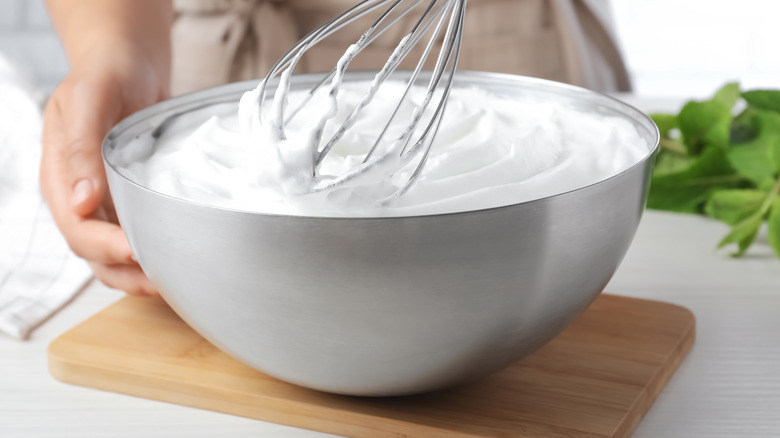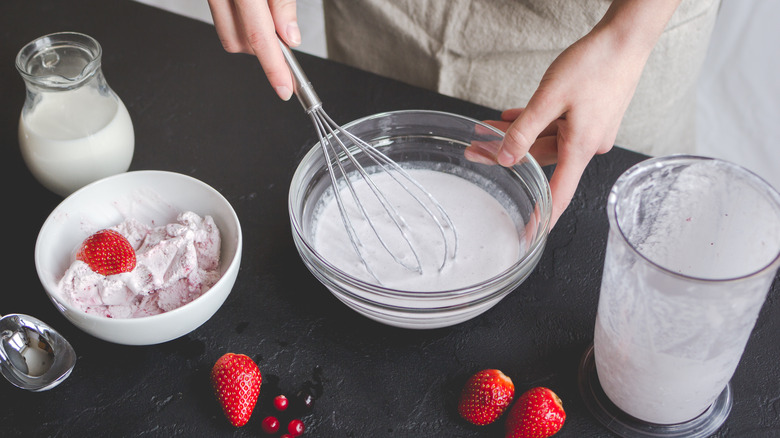What It Means When A Recipe Calls For A Cold Whisk
There are many utensils and gadgets made for cooking or baking, and it's okay to admit that maybe you're not familiar with all of them. For example, if you've never made the North African stew tagine, you'd be forgiven for not knowing immediately what a tagine pot is. When you see a recipe call for a cold whisk, you don't have to go out and buy anything special. You simply have to chill your whisk.
There are many recipes in which it's suggested to put the mixing bowl and utensils in the refrigerator or freezer so they're as cold as possible when you begin adding ingredients. Whipped cream is the most obvious and common example of this. Because the goal is thick, fluffy whipped cream, the cream's fat needs to stay cold for as long as possible to build and solidify all those desired small air bubbles, which will make the cream more stable. The colder your bowl, whisk or beaters, and cream, the better results you'll have forming those creamy peaks.
If you don't chill your bowl and whisk, will your whipped cream be ruined? Not exactly. Warmer temperatures do mean that it will take longer for the cream to whip up , though. At warmer temps, the bubbles will also be larger. As a result, you will run the risk of your whipped cream becoming grainy and flat.
Recipes that use whipped cream often require a cold whisk
When it comes to the style of whisk used for cold whisking, any kind can be used. Whether you use a balloon, flat, or Danish dough, just don't make the mistake of using it incorrectly. There is a science behind proper whisking, involving swishing the whisk side-to-side and up and down in a straight motion instead of stirring in a circle. Before you put that plastic mixing bowl in the fridge or freezer, the material matters, too. A metal bowl will freeze and hold the cold the best. Glass or ceramic will also work well. Plastic, on the other hand, just doesn't soak up and maintain the cold temperature as well.
Foods that require the cold whisk technique are usually recipes that include whipped cream as a main ingredient, such as mousse, trifles, eton mess, and cream puffs. Egg whites are another common ingredient that many recipes call for whisking into dishes. While it used to be universally accepted that room-temperature eggs were the best to use for meringue, even that has come under debate in the past few years. Now, more people believe that whisking or whipping cold eggs works just as well, if not better. Cold egg proteins are tighter. While it takes a bit longer to whisk or beat them if they start cold, they're more firm and stable than if they're warm. For that reason, many think they're easier to work with.

